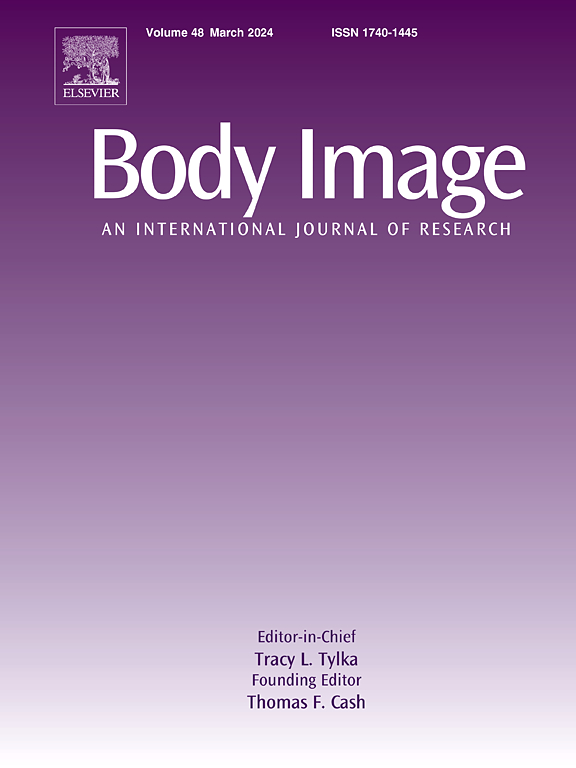Visible difference: A multi-method study investigating content of and responses to influencers with visible differences
IF 5.4
1区 心理学
Q1 PSYCHIATRY
引用次数: 0
Abstract
In recent years, a new group of body positivity influencers has emerged on Instagram, namely influencers with a visible difference (i.e., a scar, mark, or condition on your face or body that makes you look different). These influencers may be particularly influential on the body image of young people who themselves have a visible difference due to their perceived closeness. The aim of the present study was, therefore, to explore the content characteristics of these influencers and how young individuals with a visible difference get exposed to and respond to such content. The present study provides a multi-method study combining a quantitative content analysis (Study 1) with in-depth interviews (Study 2). In Study 1, a sample of 629 posts from the Instagram accounts of influencers with visible differences was analysed to examine body positive and harmful appearance-related cues, and themes, as well as their relationship to the number of likes received. In Study 2, we conducted 10 in-depth interviews with young adults with a variety of visible differences. By integrating the findings from both studies, this research highlights the potential of influencers with a visible difference for positive body image reinforcement among young individuals with a visible difference, and the broader audience. However, the results also reveal potential boundaries and harmful appearance-related cues that could hinder their positive impact on individuals’ body image.
可见差异:一项多方法研究,调查具有可见差异的影响者的内容和反应
近年来,Instagram上出现了一群新的身体积极影响者,即具有明显差异的影响者(即你脸上或身体上的疤痕、标记或状况,使你看起来与众不同)。这些影响者可能对年轻人的身体形象特别有影响,因为他们自己由于感知到的亲密关系而有明显的差异。因此,本研究的目的是探索这些影响者的内容特征,以及具有明显差异的年轻人如何接触和回应这些内容。本研究采用定量内容分析(研究1)和深度访谈(研究2)相结合的多方法研究。在研究1中,分析了来自网红Instagram账户中具有明显差异的629个帖子样本,以检查与身体积极和有害的外观相关的线索和主题,以及它们与收到的点赞数量的关系。在研究2中,我们对年轻人进行了10次深度访谈,发现了各种明显的差异。通过整合两项研究的结果,本研究强调了具有明显差异的影响者在具有明显差异的年轻人和更广泛的受众中积极身体形象强化的潜力。然而,研究结果也揭示了潜在的界限和有害的外貌暗示,这些暗示可能会阻碍它们对个人身体形象的积极影响。
本文章由计算机程序翻译,如有差异,请以英文原文为准。
求助全文
约1分钟内获得全文
求助全文
来源期刊

Body Image
Multiple-
CiteScore
8.70
自引率
28.80%
发文量
174
期刊介绍:
Body Image is an international, peer-reviewed journal that publishes high-quality, scientific articles on body image and human physical appearance. Body Image is a multi-faceted concept that refers to persons perceptions and attitudes about their own body, particularly but not exclusively its appearance. The journal invites contributions from a broad range of disciplines-psychological science, other social and behavioral sciences, and medical and health sciences. The journal publishes original research articles, brief research reports, theoretical and review papers, and science-based practitioner reports of interest. Dissertation abstracts are also published online, and the journal gives an annual award for the best doctoral dissertation in this field.
 求助内容:
求助内容: 应助结果提醒方式:
应助结果提醒方式:


